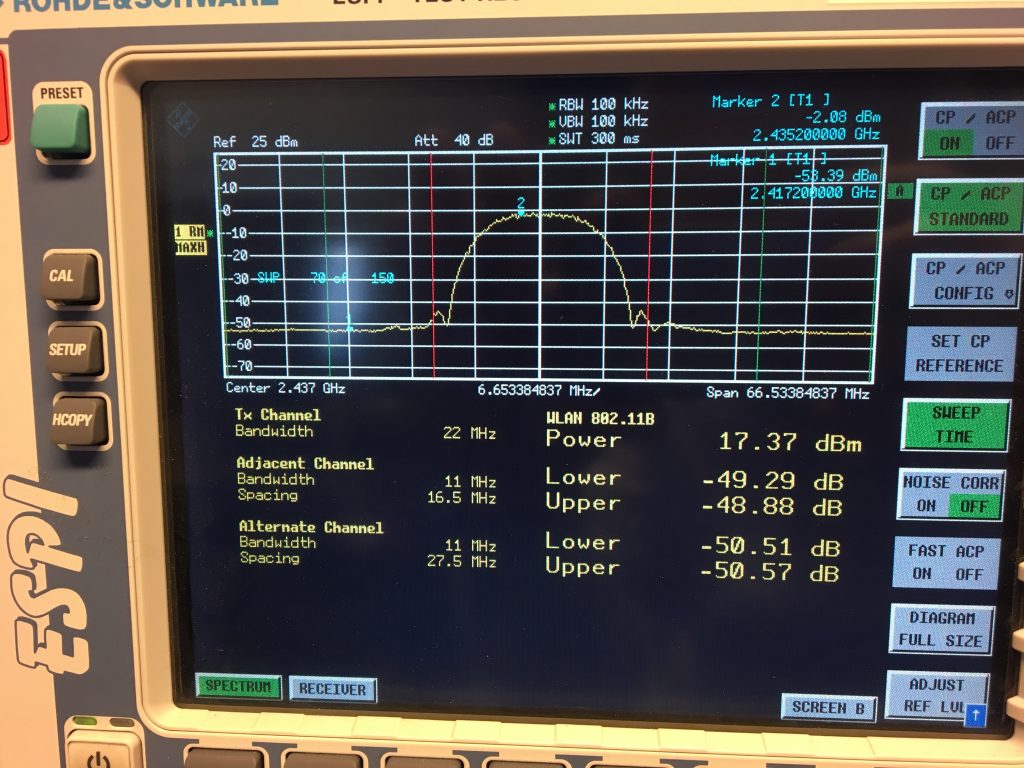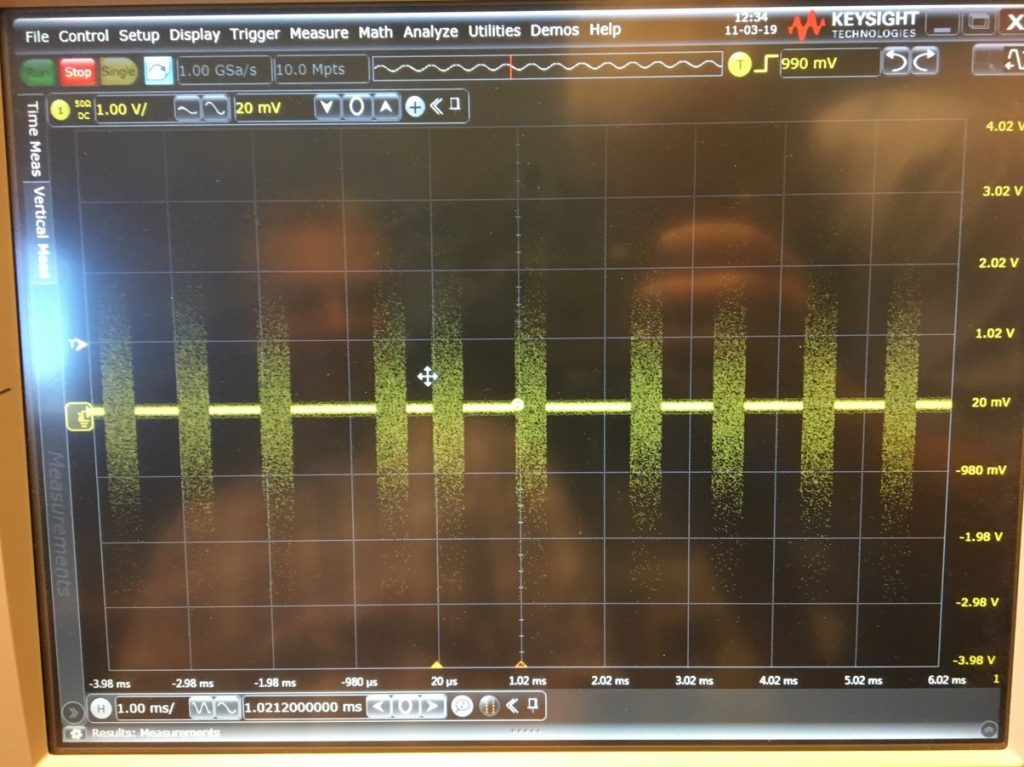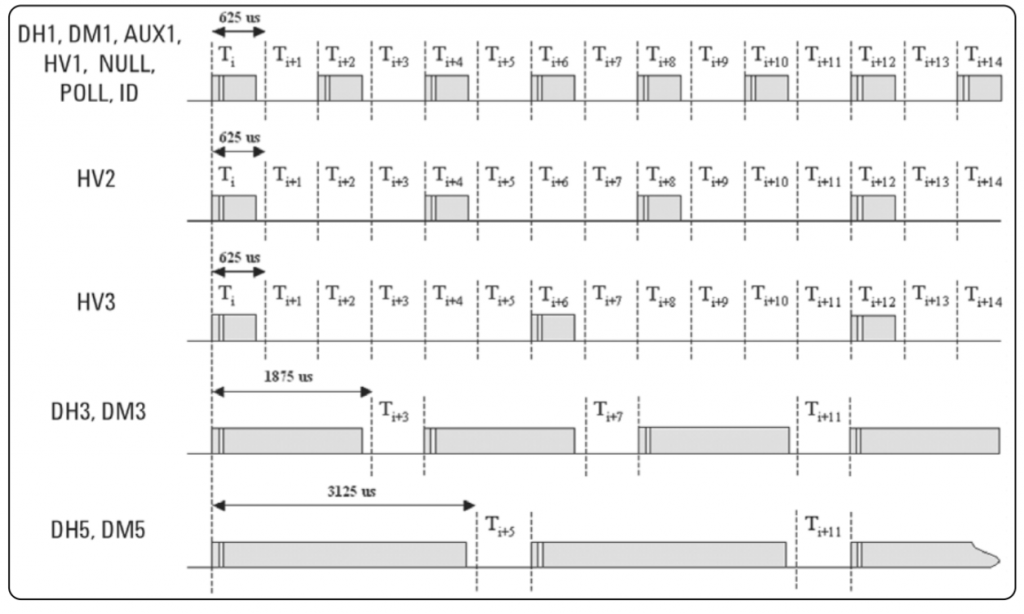This post has been “upgraded” to a page where updates will take place – see Wireless Compliance.
This blog post discusses what you need to consider in order to become SAR compliant with (especially) FCC and EU regulations for WiFi and Bluetooth. This comes on top of all the usual stuff like EMC, immunity, ESD etc.
Are power-levels OK?
The first thing you need to check, is whether the emitted power is within the legal boundaries. In the EU the maximum allowed power is 100 mW – which is the same as 20 dBm. In the US it is mostly 1000 mW – the same as 30 dBm. There are channels in the 5 GHz band where less is allowed – typically due to weather-radar – so you need to check the official tables. If you are using a module from a vendor, you can probably configure the region. Note that the antenna might add a few dBs, so with a module it makes sense to use an antenna that is pre-approved with the module.
Do you need SAR?
SAR = Specific Absorbtion Rate. Doing SAR testing and getting all the approvals is a time-consuming and expensive job. If your device is not ‘portable’ but ‘stationary’ or ‘mobile’, you might not need SAR testing.

The “globe balloon” figure shows how the squares grow as the balloon grows when blown up. Each square represents a specific radiation dose that is distributed onto an area that grows when the globe balloon is blown up. A fixed area – e.g. a person – will thus receive less radiation as the distance to the center increases, and fewer squares are faced.
The surface area of a sphere is 4*pi*r2 . This makes the intensity on the surface of the globe follow the “distance square rule”.
You can calculate MPE = Max Permissible Exposure from RF Radiated:
MPE = P/d2
In the formula above, ‘P’ is power in milliwatts and ‘d ‘is the minimum distance from the object in centimeters. The assumption is that the radiation is the same in all directions. If this number is less than 1.0 you may convince the authorities that you don’t need to do SAR. If you are using specially trained staff you may be able to raise the limit from 1.0 to 5.0.
It is possible to increase the minimal distance by e.g. having space between the antenna and the outer surface of a device. This is typically done in laptops.
If the radiation is not the same in all directions – e.g. due to a directional antenna – all measurements and calculations must at least take place in the enhanced direction.
Conducted Power
If you need to do the SAR testing you cannot simply hire a lab and ask them to perform this test. You also need to help them measure “Conducted Power” – in other words measure with an analyzer connected instead of an antenna (with matching impedance). This is to prove that the device is actually transmitting at full power. It would be easy to pass a SAR test with power turned down…
In both the actual SAR test and the conducted power test, the duty cycle must be greater than 98%. That means that the transmitter must transmit continuously. This never happens in real life – transmitters are built to save power and preserve the “ether” in a social way. Typically you will need special test-firmware for the module that assures continuous transmission.

The next figure shows a Spectrum Analyzer that “understands” the older WiFi standard 802.11b. The power is measured here to 17.37 dBm. As the oldest wave-forms are typically also the ones with most power, it is a good place to start.
Note that this analyzer works even when the duty-cycle is not 100%. The analyzer is made to be used in the real world, and thus “gates” the analyzer when packets are detected. The measurement is scaled up to 100% duty-cycle before the result is displayed. That’s nice for your own measurements, but in the test-lab you need to get close to the 100%.
It might seem that the simplest way to get a continuous signal is to have the carrier only. This is however a bad idea if the same signal is used when testing EMC. A carrier-only signal focuses the energy very narrowly, and can easily go above the EMC limits. I don’t think it will be accepted by an official SAR test-house either.

The next figure shows the time-domain version on an oscilloscope. Clearly the duty-cycle is below 50% in this case.

The final figure is a drawing from Keysight, that shows the various frame formats on Bluetooth. It is clear that here it is not possible to obtain a 100% duty-cycle. In this case you may be forced to scale-up the measured levels, even though it makes little sense.
The actual SAR measurements
Very few companies have the facilities to do the actual SAR-test, so you probably need to team up with an external lab. However, you can save time and money by making sure that when you go to this lab, you have measured the Conducted Power with a test-program that gives you 100% duty-cycle as described above. And that the laboratory can use the same program.
SAR is basically about measuring how human tissue is heated by the radiation. This is not computer calculated, but measured on actual fluids (which is why the duty cycle is so important). The measurements are performed by probing around the device in a basin with a fluid, and integrating over 1 g of fluid in the US and over 10g of fluid in the EU. Afterwards the measured values are scaled up to a kg. The US method of integrating over a single gram is the toughest, as a small “spike” in the radiation is easier “averaged out” in a 10 g sample.
These are the most important limits:
Max SAR – Tissue in body & head: 1.6 W/kg
Max SAR – Tissue in hands, arms & legs: 4.0 W/kg
To further complicate things, different fluids are used in the test basin for “head” and “body” – and the fluids also differ between the US and the EU. Generally you can expect to pass the EU measurements if you pass the US ones.
When you have passed EU and the US, all you need is the rest of the world! In many countries you can get far with the documentation and test-results you already have. Countries like e.g. Brazil and China wants to make their own measurements of EMC and immunity, but sofar not on SAR.
Enjoy!
